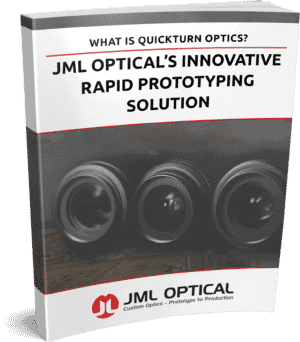In the product manufacturing sector, speed is key. As new technologies are developed and introduced on a seemingly day-to-day basis, companies must continuously strive to shorten their development cycle to remain ahead of competitors. This is particularly necessary in industries like optical manufacturing, where customers are constantly demanding stronger, smaller, and all-around better components. That’s where rapid prototyping comes in.
What Is Rapid Prototyping?
Rapid prototyping is a broad term encompassing various techniques and technologies used to create physical models of new designs suitable for proof-of-concept and testing operations. Compared to conventional methods, it enables manufacturers to produce these models much faster, which, in turn, helps them move quicker through the product development (PD) process. As a result, they can decrease the time it takes to introduce their new product to market and, consequently, increase the chance their product beats out the competition.
In the optical manufacturing sector, customers often require custom components and assemblies. While these can take several months to produce under a traditional manufacturing plan, rapid prototyping can shorten the development cycle to a couple of months for complex, multi-element assemblies and as little as a week for single elements.
Benefits of Rapid Prototyping
Rapid prototyping benefits product manufacturers in many ways, such as:
- Shorter time to market. The most apparent benefit of rapid prototyping is that it allows manufacturers to introduce new products into the market or deliver custom products to a customer much faster than conventional manufacturing methods. While this speed is vital when trying to compete in the market during normal times, it can be life-saving when making essential equipment during states of emergency (e.g., medical instruments and PPE during the COVID-19 pandemic).
- Lower manufacturing costs. As rapid prototyping does not need special patterns or tools, it is generally much less expensive than other prototyping methods.
- Broad design freedom/flexibility. Rapid prototyping is less restrictive than other prototyping methods. Manufacturers can create a wide range of designs without worrying about design conventions and, if changes are needed, easily make alterations to the design.
- Smaller production risks. Manufacturers use prototypes to test out designs before they go into full production. This allows them to identify and resolve any potential issues before they become more costly to fix.
- Easier buy-in. Physical models make it easier for manufacturing teams to present new ideas to shareholders since they do not have to visualize what the part or product will look like based on blueprints and spec docs.
Choose Rapid Prototyping With QuickTurn Optics From JML Optical

- Shortened lead times. We offer a standard lead time of four weeks for QTO projects, depending on the design and material availability.
- Vertically integrated capabilities. All prototyping and production operations are offered and performed in-house, which means a simpler and streamlined supply chain for you.
- Continuous evolution. Customers in many rapidly developing industries rely on us for optical components and assemblies. We are continually evolving and enhancing our service to ensure we can continue to meet their needs.
To learn more about our QuickTurn Optics service and how it can benefit your next optical product project, download our eBook, What Is QuickTurn Optics?.

